Humphry Repton's 'secret country gem' at Endsleigh, one of the finest hotel gardens in Britain
Non Morris explores the historic 100-acre grounds of Endsleigh, Olga Polizzi’s alluring West Country hotel, designed by Humphry Repton in perfectly Picturesque style.
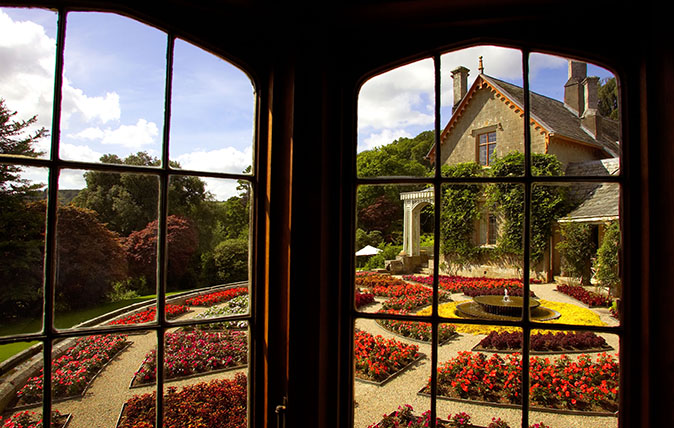

There is a sheltered, south-facing terrace in a ravishing corner of Devon with perfect views down to the lushly wooded valley of the River Tamar. The terrace is protected by the handsome walls of what was once Endsleigh Cottage, a hunting and fishing lodge built for the 6th Duke of Bedford and his wife, Georgiana, in 1810.
The lodge was built as a series of low, comfortable buildings designed to nestle unobtrusively into the landscape – a style known as a cottage orné. Endsleigh came complete with such delights as a thatched dairy for the duchess and an unlived-in little house in the woods, built specifically so that, when the fire was lit by a boy who rowed across the river every morning, a charming wisp of smoke would emerge from the treetops to ‘animate’ the landscape.
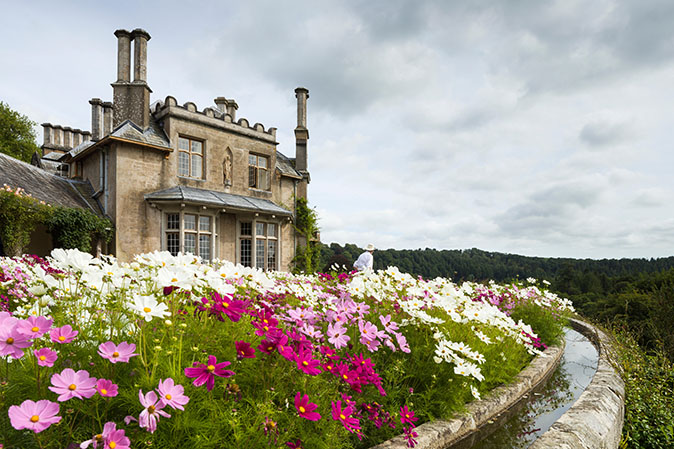
The house was designed by Jeffry Wyatt (famous for transforming Windsor Castle into a castellated Gothic palace) and, once it was completed in 1814, Humphry Repton, who had designed the duke’s garden at Woburn, was invited to consider the 100 or so acres of grounds.
It remains one of the most perfect examples of the Picturesque style, not least because it’s now a hotel owned and run in a personal and passionate way by Olga Polizzi. Repton famously prepared red linen-bound portfolios for his clients with beautiful ‘lift-the-flap’ watercolours to show them what their garden would look like. ‘If you look at our Red Book, you see it all in front of you… the long border, the parterre, the dell,’ Olga tells me.
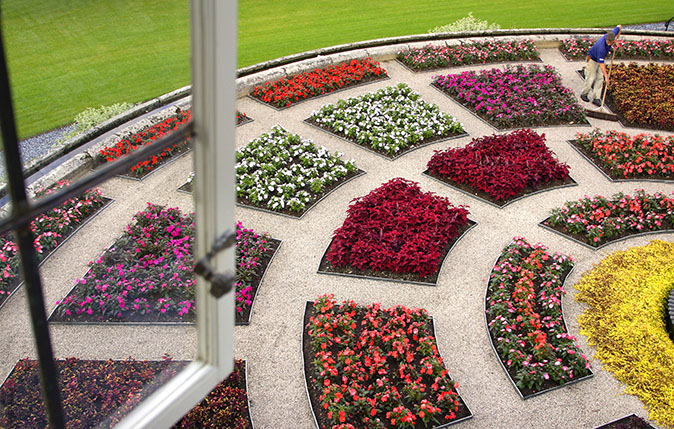
As one of Repton’s last schemes, designed when he was no longer able to walk and had to be carried about the grounds in a sedan chair, it’s a garden that ensures there is comfort and intimacy close to the house, as well as a sense of surprise and adventure when you set off to explore the grounds.
The south-facing terrace – the parterre – was conceived by Repton as a ‘children’s garden’, built in a sunny spot in front of the nursery wing (or ‘children’s cottage’) and set out as a series of neat concentric beds around a pretty bowl-shaped marble fountain. In the Red Book, you’ll find an idyllic illustration of children floating toy sailboats along the elegant curved rill that frames the parterre.
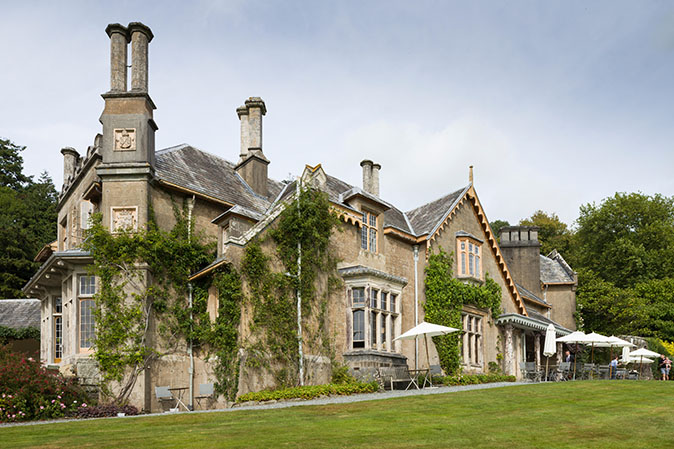
There is a rustic verandah with bark-covered columns clothed today in the delicate pale-pink roses Phyllis Bide and Shropshire Lass and a boxy pavilion framed with exquisite French-grey painted trellis (the trellis is woven rather than nailed together) that casts wonderful, delicate shadows on the soft stone walls.
Sign up for the Country Life Newsletter
Exquisite houses, the beauty of Nature, and how to get the most from your life, straight to your inbox.
‘If you ever have the chance to have a lazy lunch under the verandah,’ smiles Olga, with her deeply imbued sense of how to turn a good thing into a magical experience, ‘you can have a long table laid here – it’s really lovely.’
The feel of the parterre is surprisingly modern. There’s a clever evergreen collar of golden creeping Jenny around the fountain and the beds are planted simply and stylishly with perhaps hundreds of mauve-flushed Viola Sorbet Orchid Rose Beacon followed by Tulipa Groenland (rose pink with green flames) for winter and spring and the long-lasting Salvia horminum Claryssa Mixed for a more relaxed look in summer: ‘I love it when the salvias go mad. It looks wonderful when it’s a bit wild.’
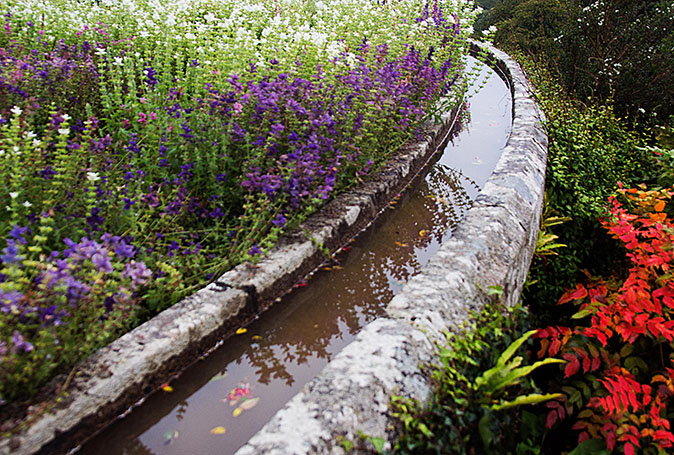
Olga bought Endsleigh in 2005. It had been sold after the death of the 12th Duke in 1953 and run as a sporting lodge for several decades by the Fishing Friends, a syndicate made up of the duke’s friends who had enjoyed fishing and shooting on the estate.
A certain amount of restoration of the long border and the Shell House had taken place in the 1980s, but, by 2003, it was on the market: a dilapidated, Grade I-listed house with much of the garden impenetrable.
A friend had suggested Olga visit it, knowing she would love the position, the grottos and the atmospheric waterfalls, but her initial verdict was that it was too much to take on. A Marcus Binney article in The Times setting out the urgent need for a lifeline – ‘Can a secret country gem be saved for us all?’ – made her reconsider. ‘I bought it with my heart and not my head. It was so beautiful.’ Her daughter, Alex, moved into the lodge house to supervise the painstaking renovation and Hotel Endsleigh opened in August 2005.
Restoring the dell, the wilder and more picturesque part of the grounds, has been a particularly challenging job. Paths and a serious collection of historic and champion trees were smothered by brambles and self-seeding sycamores.
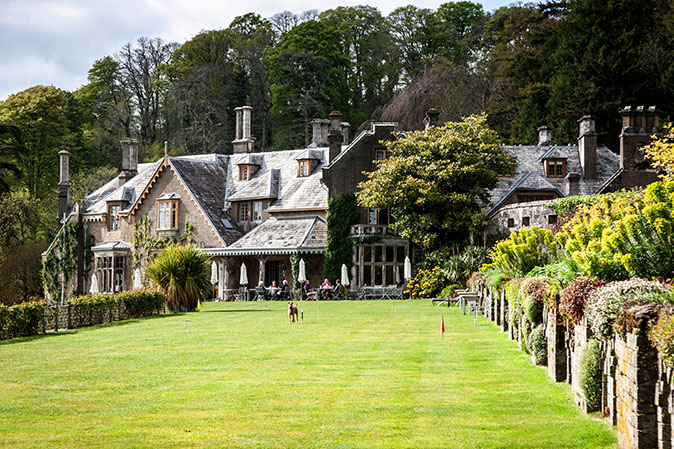
Repton’s plan was for an exciting, almost alpine terrain, with plenty of deliberately created viewpoints and a network of tantalising paths and steps, some leading up to a rockery or down to a pool (in his words, ‘to add glitter to the scene’) and some fading mysteriously away into the undergrowth.
There are precise directions for the creation of the waterfalls: rock faces were to be cleared to create a craggy backdrop and flowing water, entirely reliant on gravity, expertly choreographed so that it would bounce from stone to stone. ‘Repton would have made sure,’ Ben Ruscombe-King, the head gardener, tells me, ‘that a small, gnarled tree with slightly exposed roots was planted dramatically at the edge of a rock.’
‘He directed water with a glint in his eye,’ enthuses Mr Ruscombe-King, who has the job of keeping the rock faces clear and trying to keep the water running throughout the garden. ‘It’s a fine balancing act. If you have one bit running too fast, then another bit doesn’t work. You learn on the job – it’s not something you’re trained to do as a gardener, how to run Georgian water systems!’
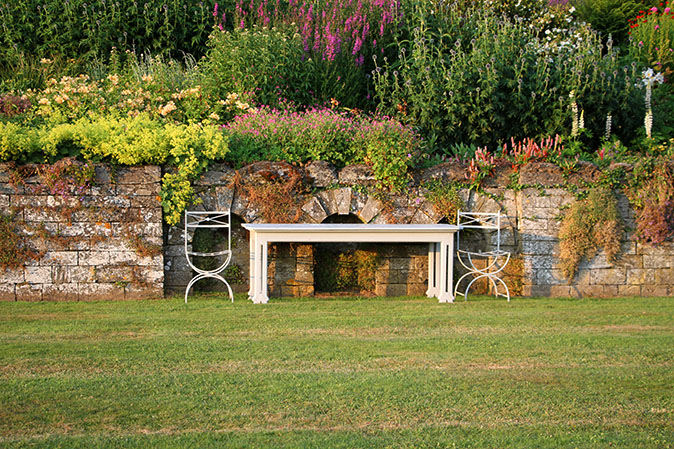
Luckily, Mr Ruscombe-King fell under the spell of Endsleigh from the day of his interview. He remembers arriving at 8am and was still exploring when it was too dark to see. He clearly thrives on the challenges of his job.
‘We try to make the gardens accessible and respect the history, but, at the same time, try to retain the garden’s own magical atmosphere – the feeling as you wander round the garden that you’ve just discovered it,’ he says.
He’s still making discoveries of his own – he uncovered an unrecorded Chilean yew the week before I visited – and is growing alpine plants from seed, to introduce an increasingly subtle palette of plants to areas such as the cascade and the rockery.
It was Repton who ensured that the main lawn would sweep down perfectly to the banks of the Tamar by employing the time-honoured technique of ‘placing persons at different stations’ to guarantee that shrubs or trees didn’t block any views of the shimmering water.
On the opposite bank, much of the deciduous woodland was replaced with conifers to remind Georgiana, Duchess of Bedford, of her Scottish roots. There were, apparently, 500,000 Scots pines standing by in the nursery.
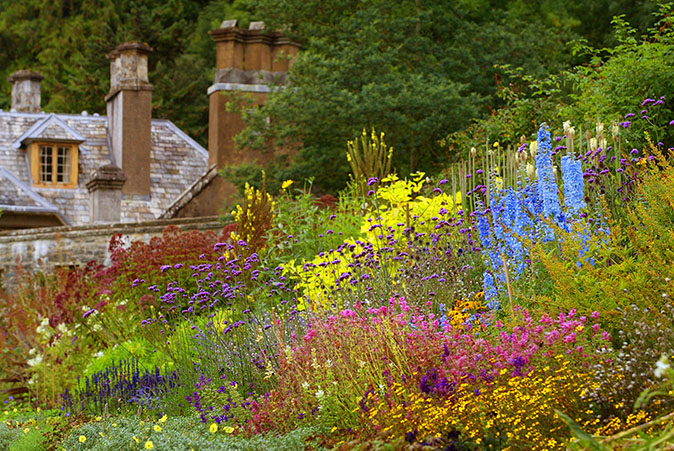
Extending eastwards from the main house is the long border, a magnificent 100 yards of kaleidoscopic herbaceous planting raised (at sedan-chair level, perhaps?) above a ‘pierced’ stone wall.
With the only free-draining soil on the estate, this is where long-established agapanthus, delphiniums and kniphofia (with matching, long-forgotten names) bask in the sunshine. There are hundreds of tulips and alliums in spring and, later in the season, fantastic deep-pink cushions of Persicaria affinis Darjeeling Red spill over the rim of the wall.
In the same way that the interior of the house has been restored and old furniture mixed with contemporary fabrics to create a deeply comfortable atmosphere, so the planting here is gently nurtured and cleverly underpinned with newer architectural plants, such as the towering, thistle-like Cirsium rivulare Atropurpureum, to add drama and rhythm.
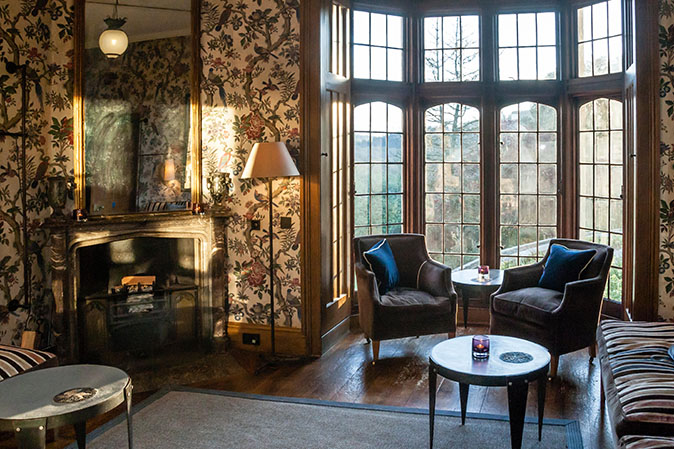
There is always an exuberant vase of garden flowers in the hall to greet guests as they arrive. As you move through the hotel to take in the views, it’s not a surprise to learn that, when the Duke of Bedford selected this spot, he had a third of Devon to choose from.
Olga relishes the quiet here 200 years later: ‘There’s no noise from cars and no light pollution. At night, all you can see is stars.’
Hotel Endsleigh, Milton Abbot, Tavistock, Devon – www.hotelendsleigh.com. The garden is open all year to hotel guests and from 10am until dusk to garden visitors; entry £5, free to RHS members under the partner scheme.
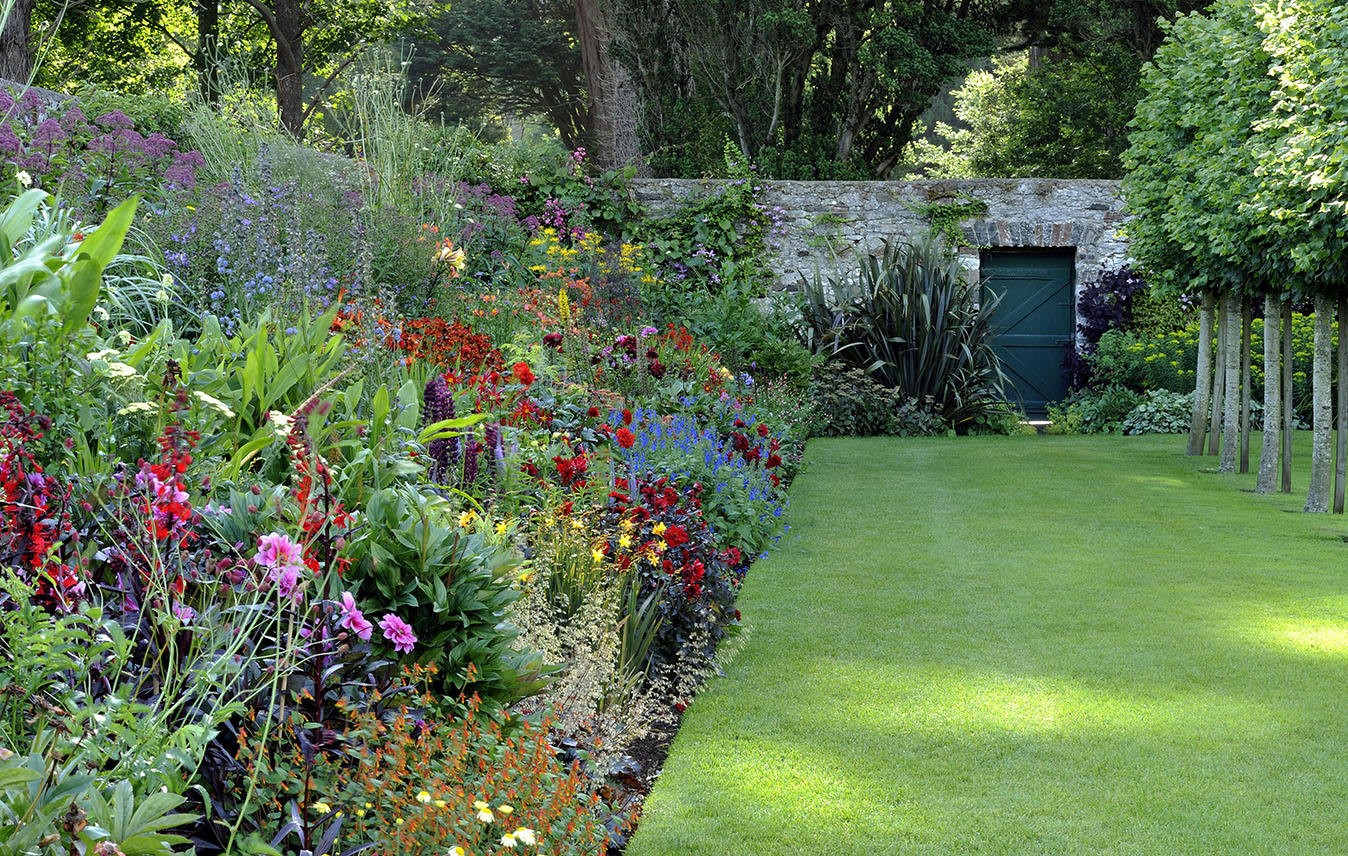
The walled garden at Glenarm Castle, full of surprising, exhilarating and fiery colours
Glenarm Castle's walled garden is a testament to the endless nurturing enthusiasm and creativity of those who care for it,
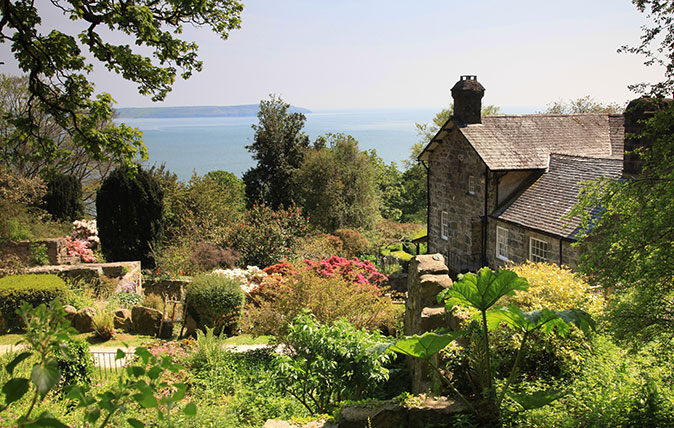
Credit: Plas yn Rhiw - National Trust
Plas yn Rhiw: An intoxicating Welsh garden that time forgot
Non Morris visited one of the most beautiful gardens in Wales, and came away utterly smitten.
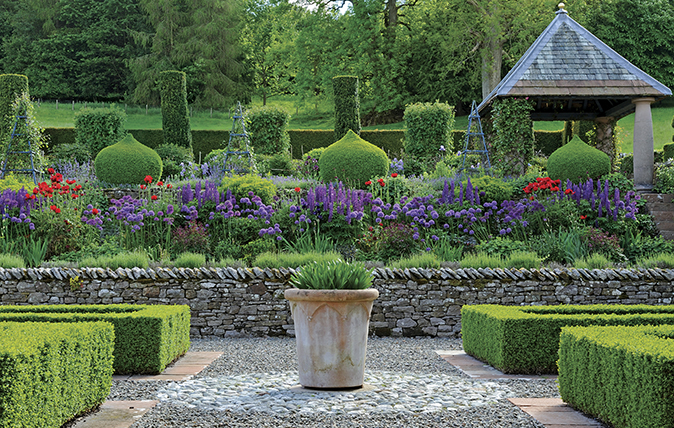
Warnell Hall, Cumbria: Where sympathy and experimentation go hand in hand
Non Morris is intrigued by the close attention to detail that has produced a new Cumbrian garden of great style
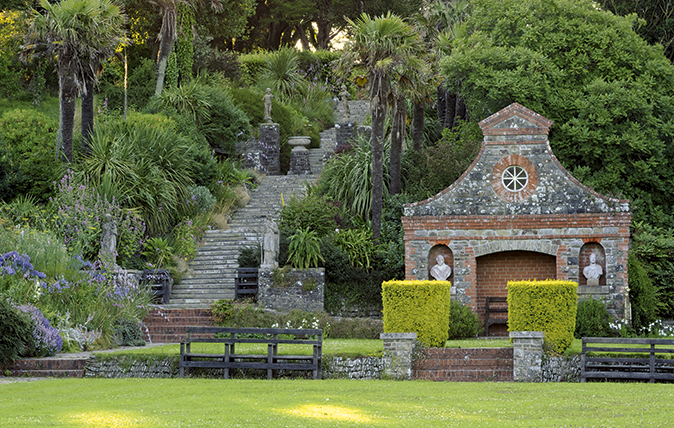
Tapeley Park: A Devonshire garden filled with dramatic flourishes at every turn
Non Morris discovers that experimentation, environmentalism and numerous dramatic flourishes invigorate this unusual Devonshire garden at every turn.
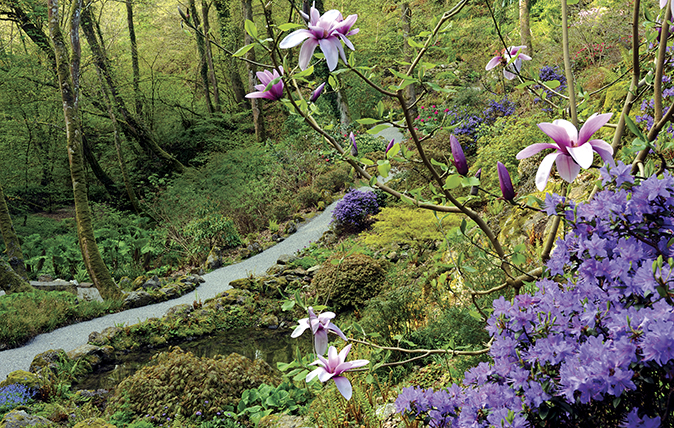
Credit: Val Corbett/©Country Life Picture Library
Plas Cadnant, Isle of Anglesey: The place where the heart rules
Non Morris is enchanted to learn about the twice-over extraordinary restoration of an Anglesey garden by its owner, who ‘fell
Country Life is unlike any other magazine: the only glossy weekly on the newsstand and the only magazine that has been guest-edited by HRH The King not once, but twice. It is a celebration of modern rural life and all its diverse joys and pleasures — that was first published in Queen Victoria's Diamond Jubilee year. Our eclectic mixture of witty and informative content — from the most up-to-date property news and commentary and a coveted glimpse inside some of the UK's best houses and gardens, to gardening, the arts and interior design, written by experts in their field — still cannot be found in print or online, anywhere else.
-
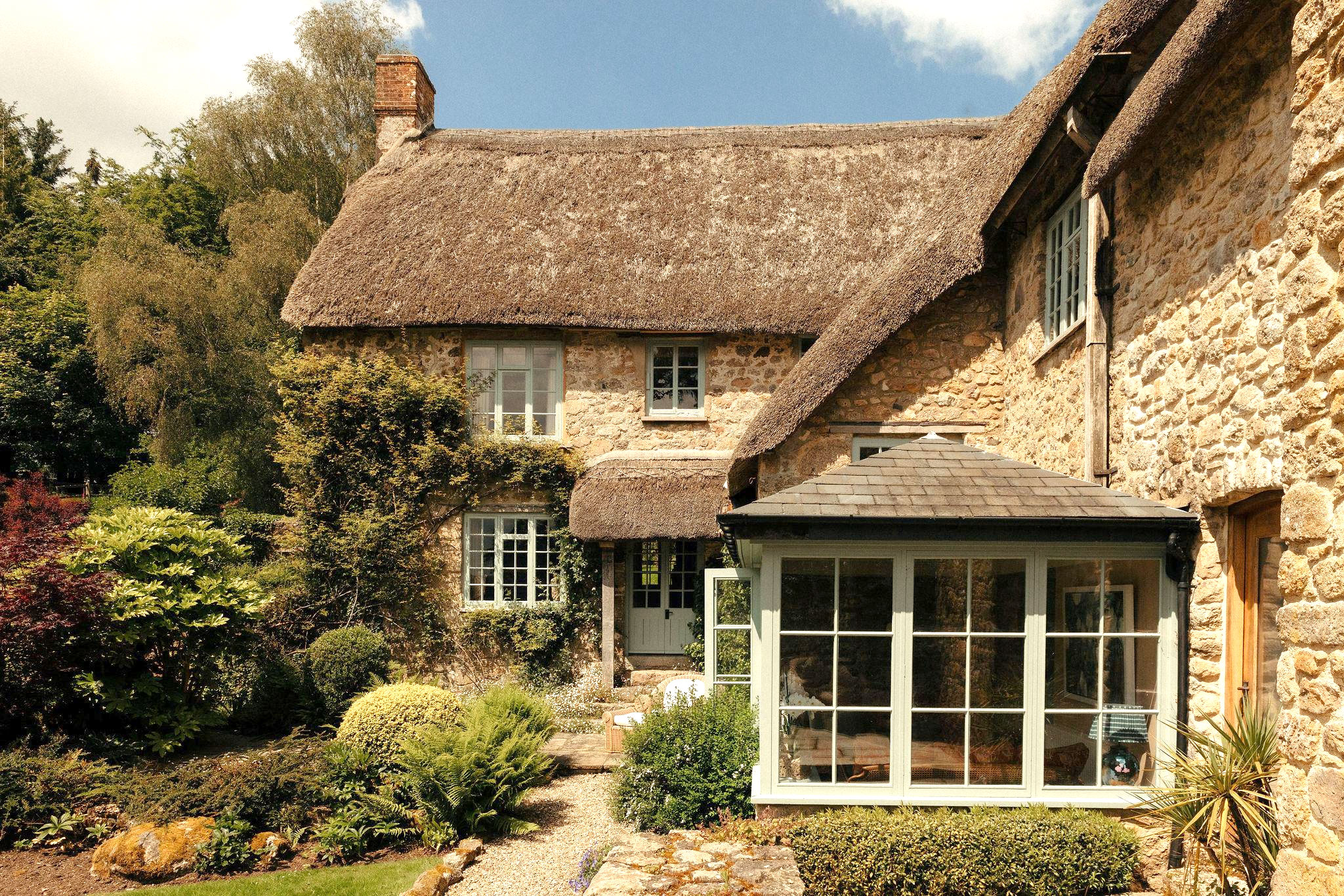 Five beautiful homes, from a barn conversion to an island treasure, as seen in Country Life
Five beautiful homes, from a barn conversion to an island treasure, as seen in Country LifeOur pick of the best homes to come to the market via Country Life in recent days include a wonderful thatched home in Devon and a charming red-brick house with gardens that run down to the water's edge.
By Toby Keel Published
-
 Shark tanks, crocodile lagoons, laser defences, and a subterranean shooting gallery — nothing is impossible when making the ultimate garage
Shark tanks, crocodile lagoons, laser defences, and a subterranean shooting gallery — nothing is impossible when making the ultimate garageTo collectors, cars are more than just transport — they are works of art. And the buildings used to store them are starting to resemble galleries.
By Adam Hay-Nicholls Published
-
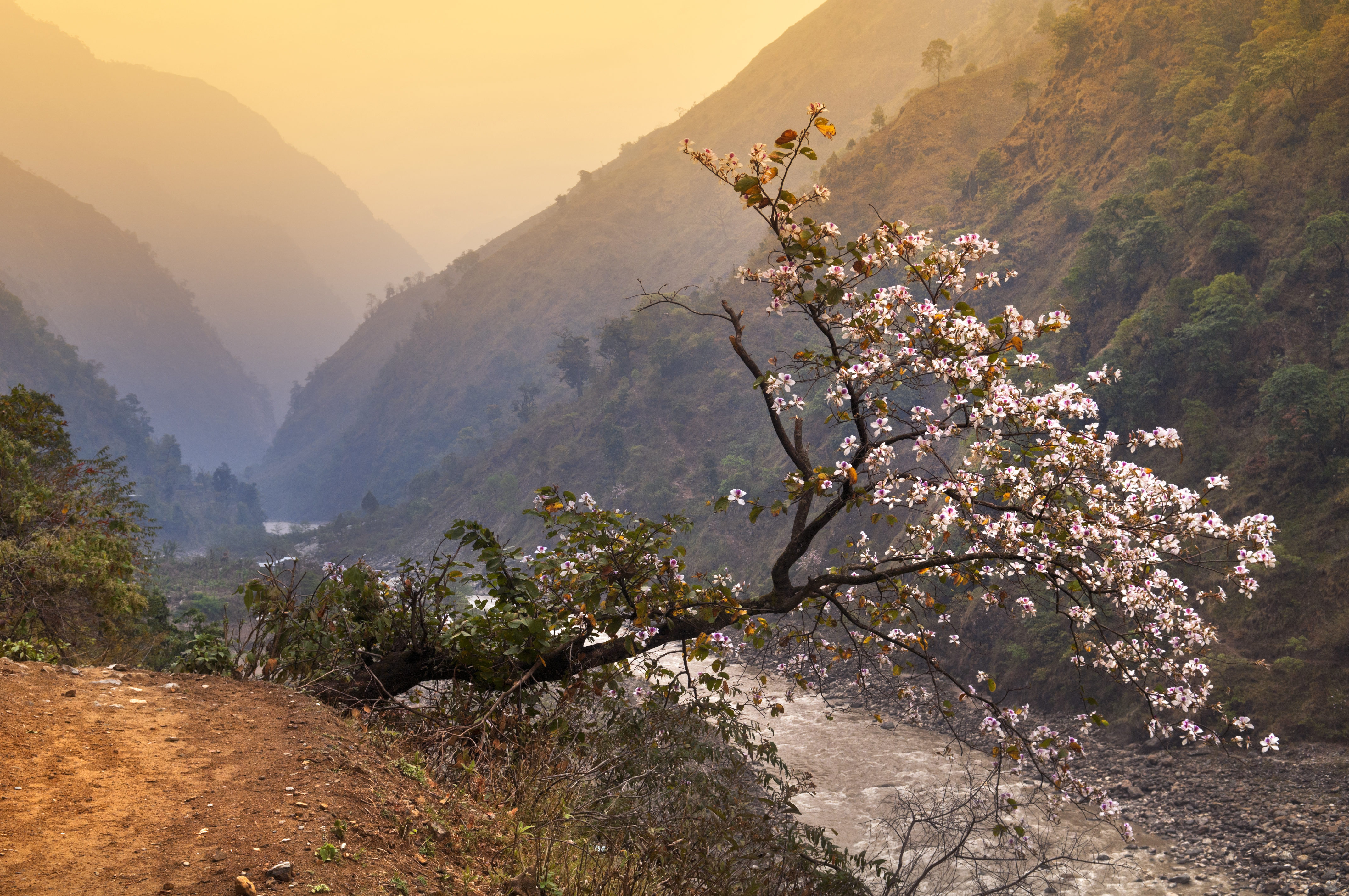 The man who trekked Bhutan, Mongolia, Japan, Tasmania and New Zealand to bring the world's greatest magnolias back to Kent
The man who trekked Bhutan, Mongolia, Japan, Tasmania and New Zealand to bring the world's greatest magnolias back to KentMagnolias don't get any more magnificent than the examples in the garden at White House Farm in Kent, home of Maurice Foster. Many of them were collected as seed in the wild — and they are only one aspect of his enthralling garden.
By Charles Quest-Ritson Published
-
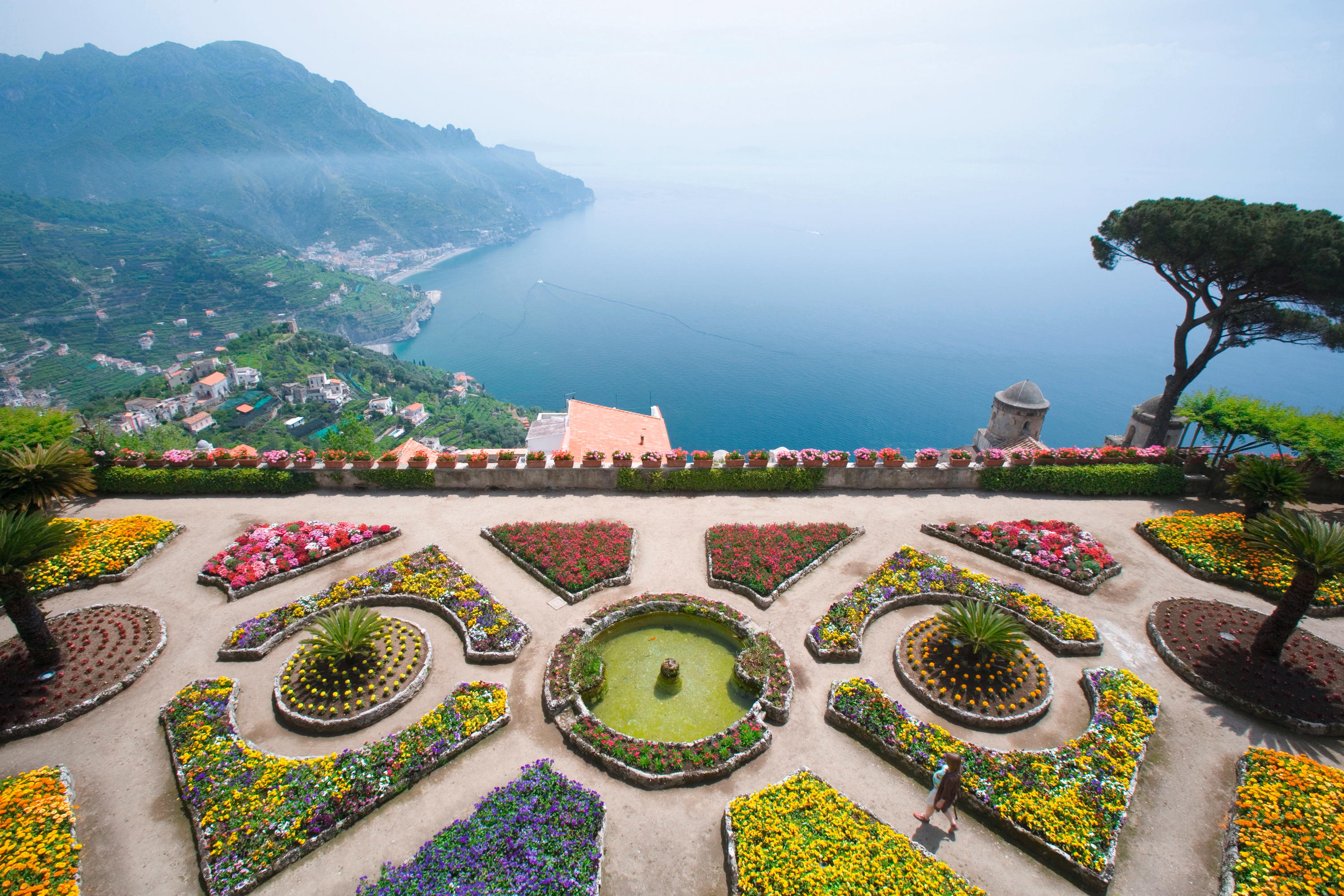 The 'breathtakingly magnificent' English country gardens laid out on the Amalfi Coast, and the story of how they got there
The 'breathtakingly magnificent' English country gardens laid out on the Amalfi Coast, and the story of how they got thereKirsty Fergusson follows the Grand Tour to Campania in Italy, where the English combined their knowledge and love of plants with the rugged landscape to create gardens of extraordinary beauty.
By Kirsty Fergusson Published
-
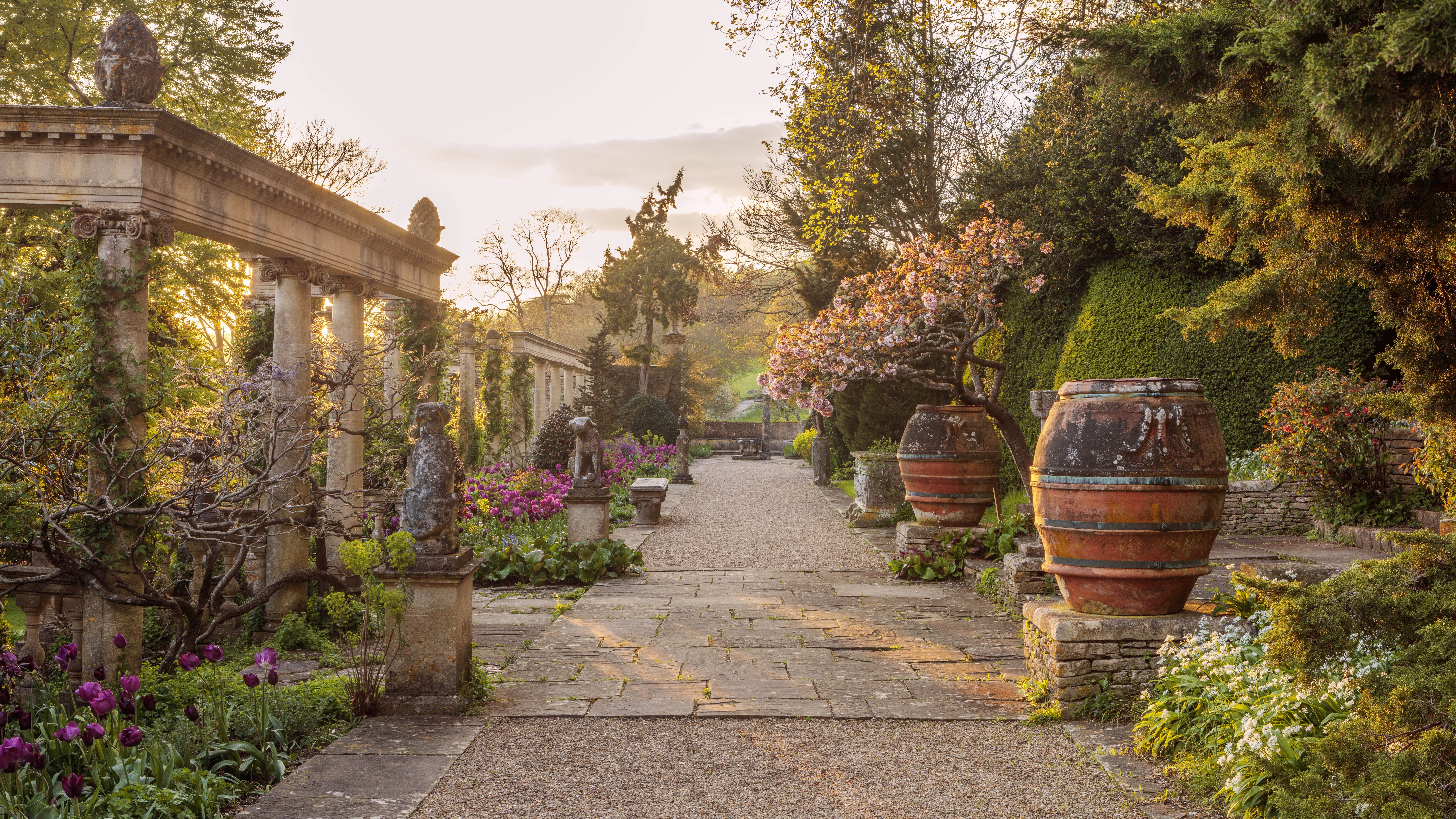 Have your say in the Historic Houses Garden of the Year Awards 2025
Have your say in the Historic Houses Garden of the Year Awards 2025By Annunciata Elwes Published
-
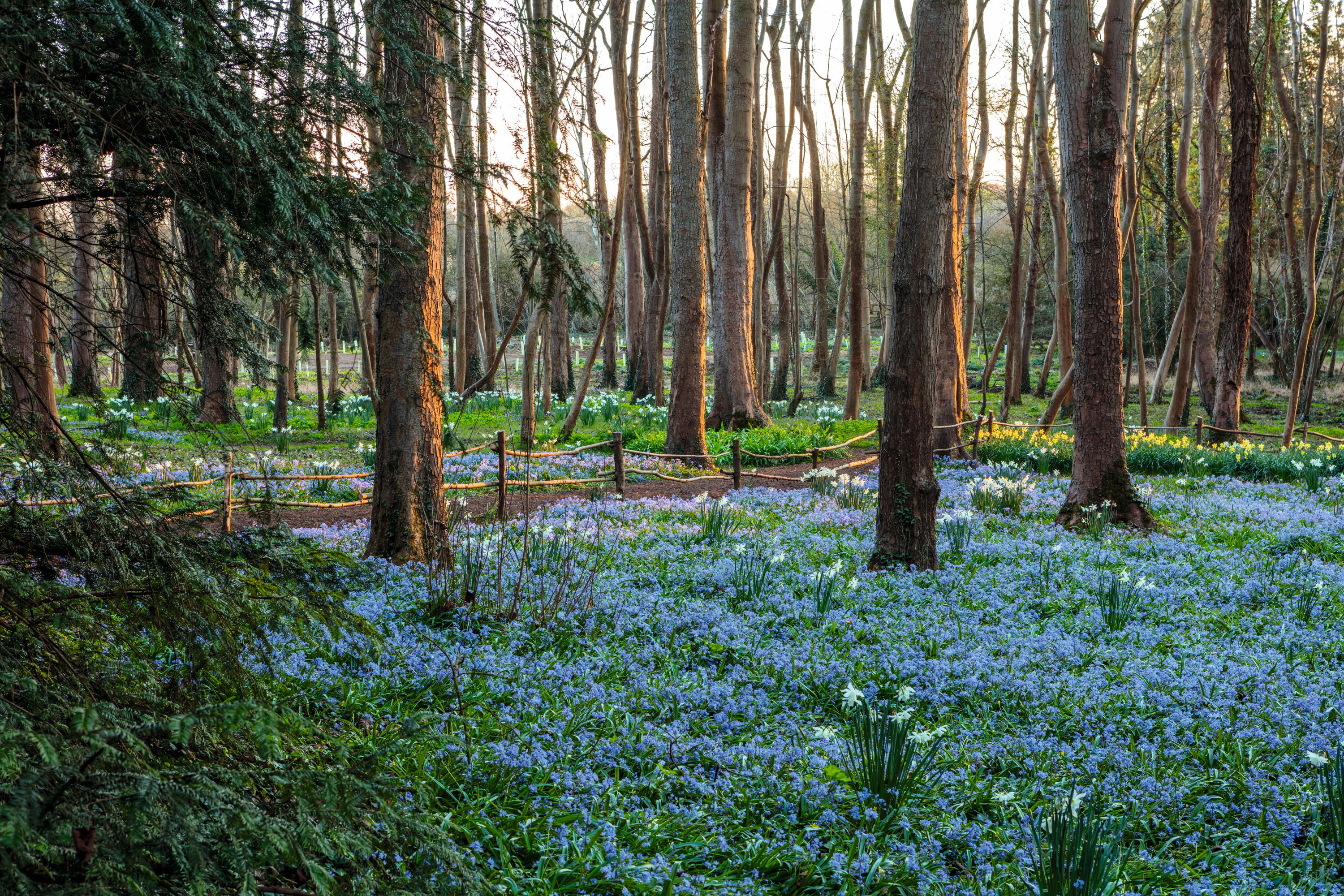 Evenley Wood Garden: 'I didn't know a daffodil from a daisy! But being middle-aged, ignorant and obstinate, I persisted'
Evenley Wood Garden: 'I didn't know a daffodil from a daisy! But being middle-aged, ignorant and obstinate, I persisted'When Nicola Taylor took on her plantsman father’s flower-filled woodland, she knew more about horses than trees, but, as Tiffany Daneff discovers, that hasn’t stopped her from making a great success of the garden. Photographs by Clive Nichols.
By Tiffany Daneff Published
-
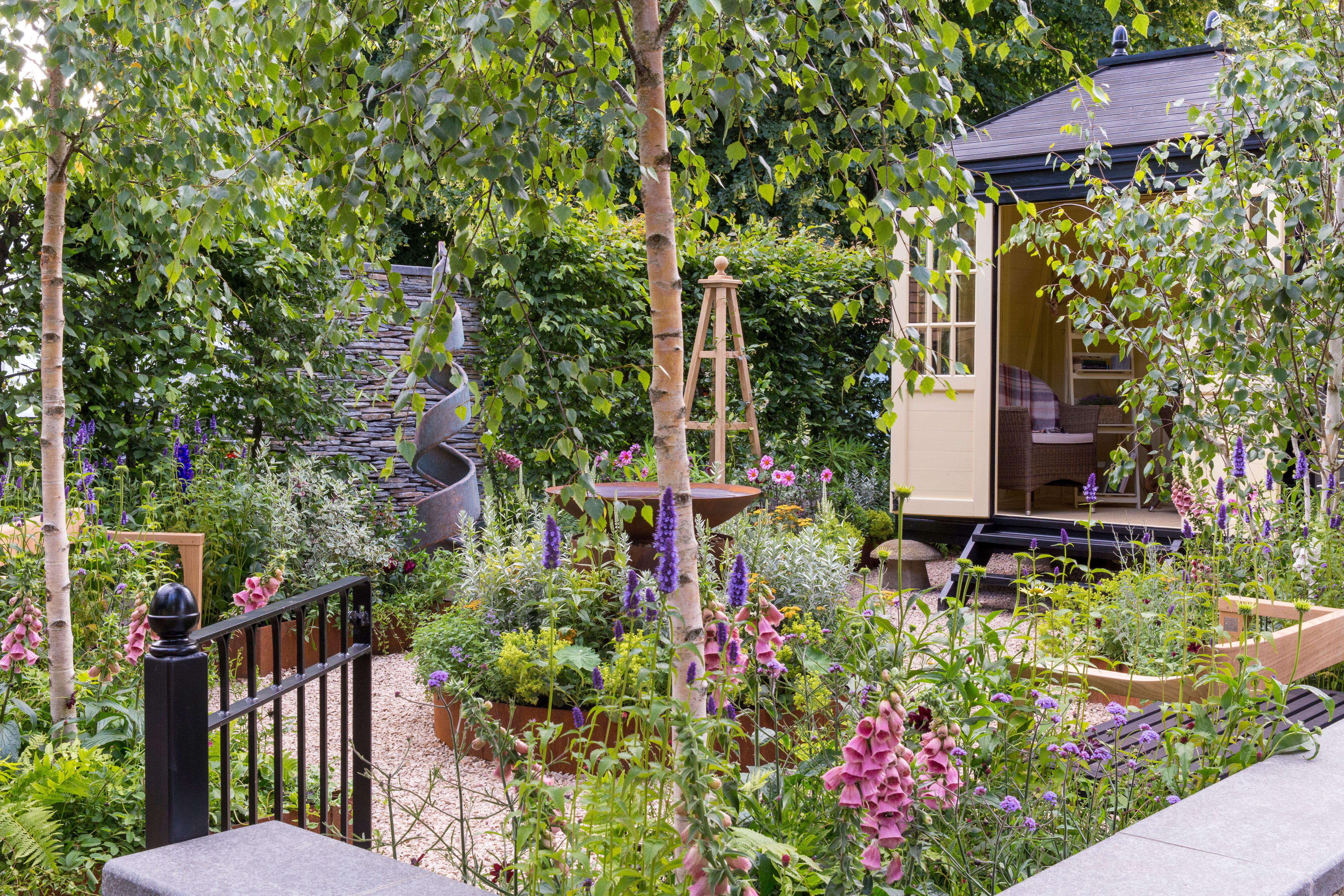 An expert guide to growing plants from seed
An expert guide to growing plants from seedAll you need to grow your own plants from seed is a pot, some compost, water and a sheltered place.
By John Hoyland Published
-
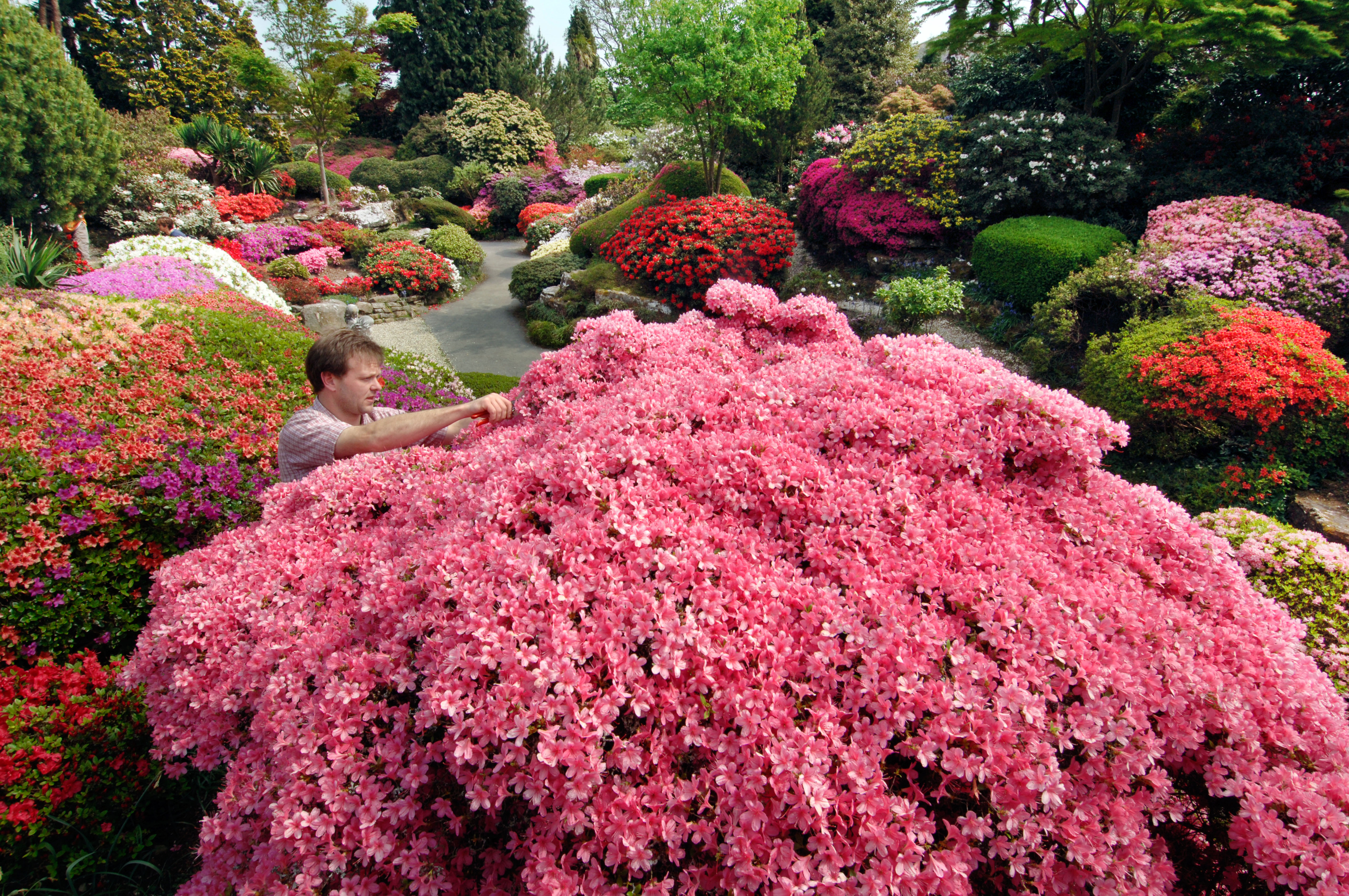 The best rhododendron and azalea gardens in Britain
The best rhododendron and azalea gardens in BritainIt's the time of year when rhododendrons, azaleas, magnolias and many more spring favourites are starting to light up the gardens of the nation. Here are the best places to go to enjoy them at their finest.
By Amie Elizabeth White Published
-
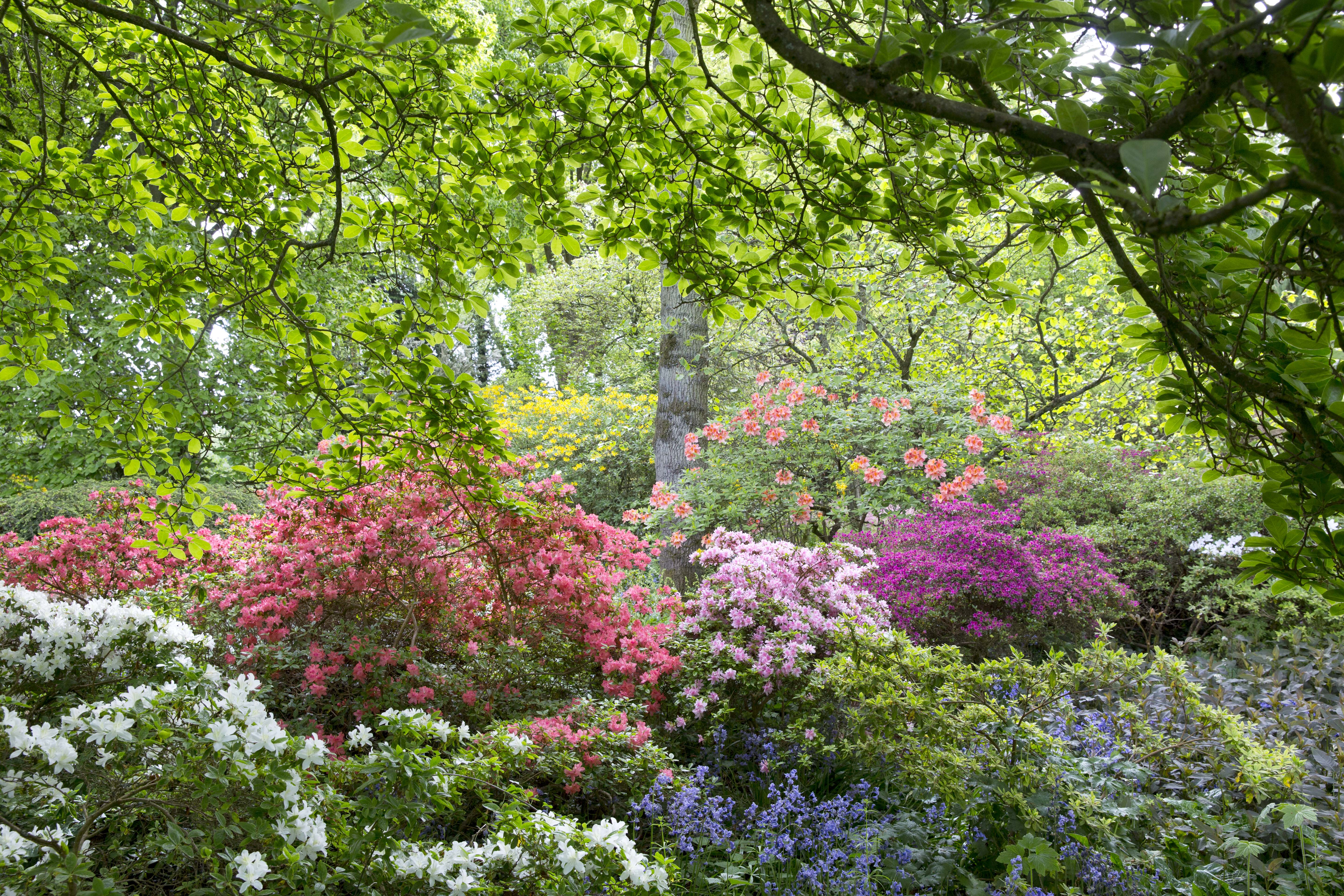 Great Comp: The blissful garden flooded with rhododendrons and azaleas that's just beyond the M25
Great Comp: The blissful garden flooded with rhododendrons and azaleas that's just beyond the M25Each spring, Great Comp Garden — just outside the M25, near Sevenoaks — erupts into bloom, with swathes of magnolias, azaleas and rhododendrons. Charles Quest-Ritson looks at what has become one of the finest gardens to visit in Kent.
By Charles Quest-Ritson Published
-
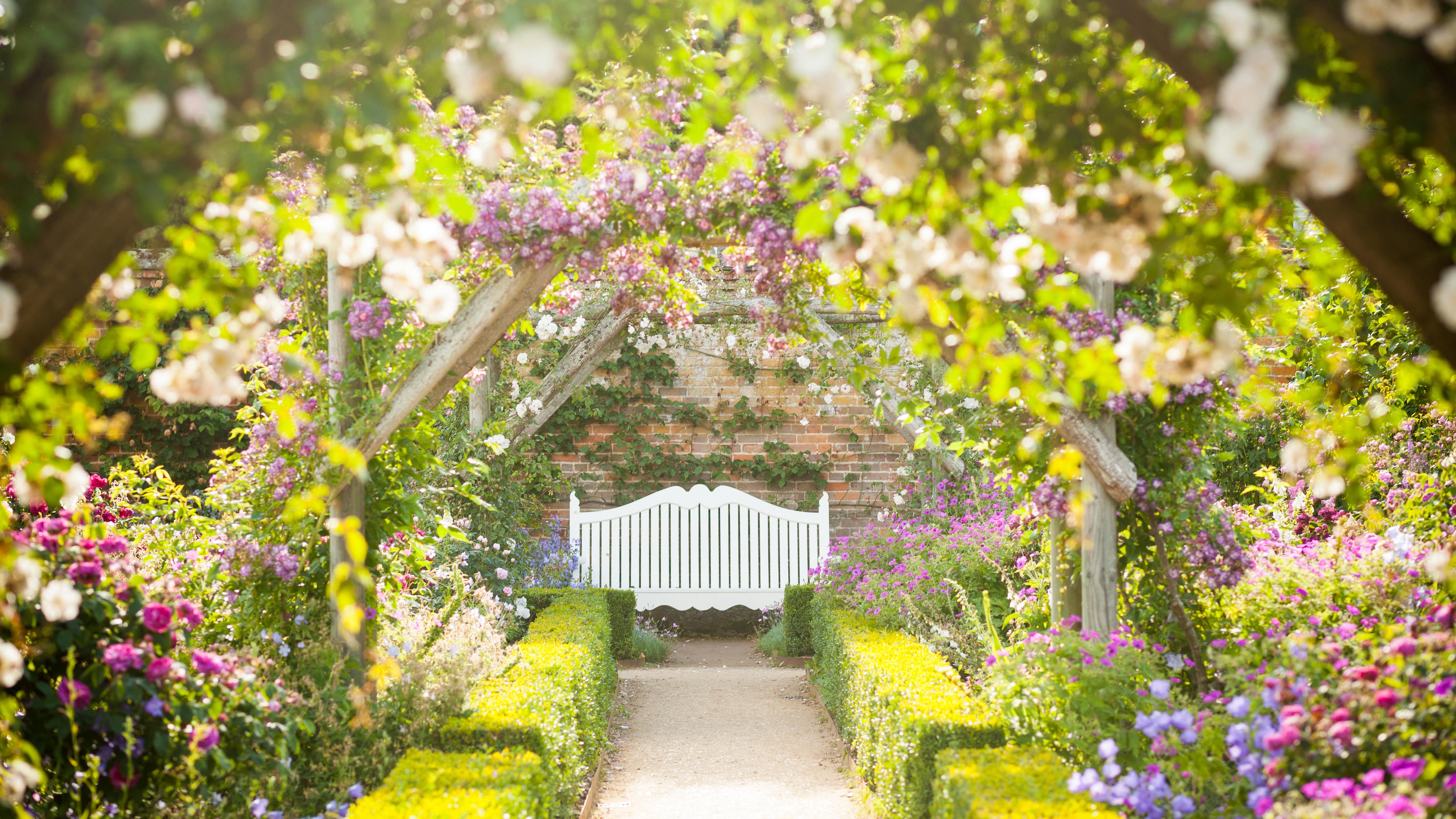 'I'm the expert who wrote the RHS's guide to roses — here's why pruning them right now is almost certainly a terrible mistake'
'I'm the expert who wrote the RHS's guide to roses — here's why pruning them right now is almost certainly a terrible mistake'More roses die from over-pruning than any other cause so what’s the reasoning underpinning this horticultural habit? Charles Quest-Ritson, the garden expert who wrote the RHS Encyclopedia of Roses, takes a closer look.
By Charles Quest-Ritson Last updated